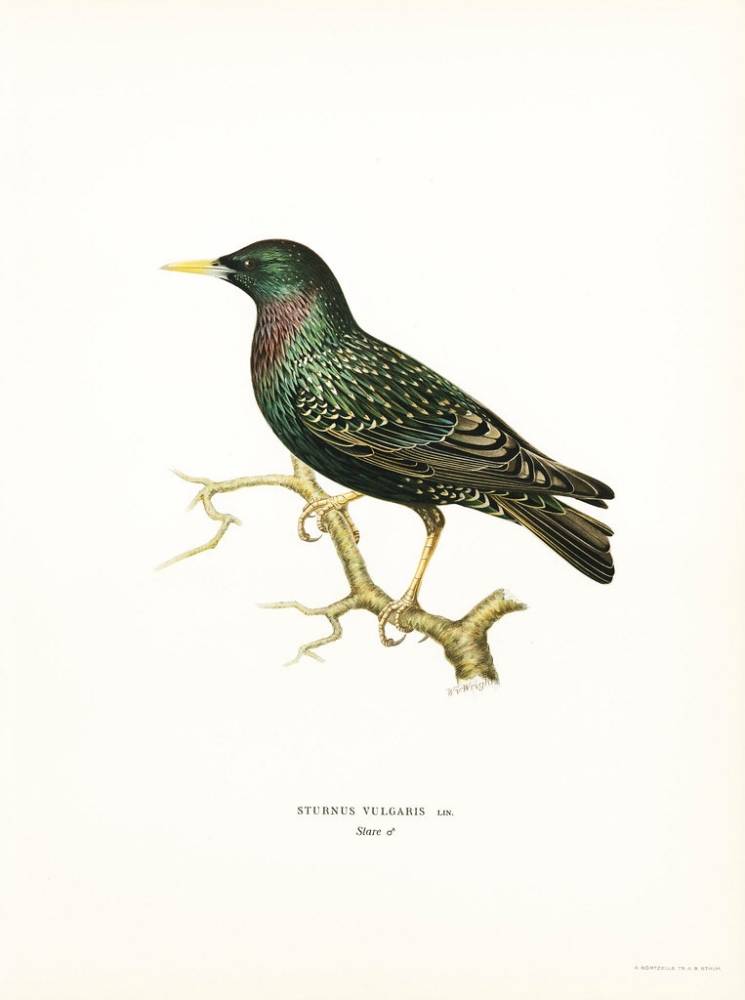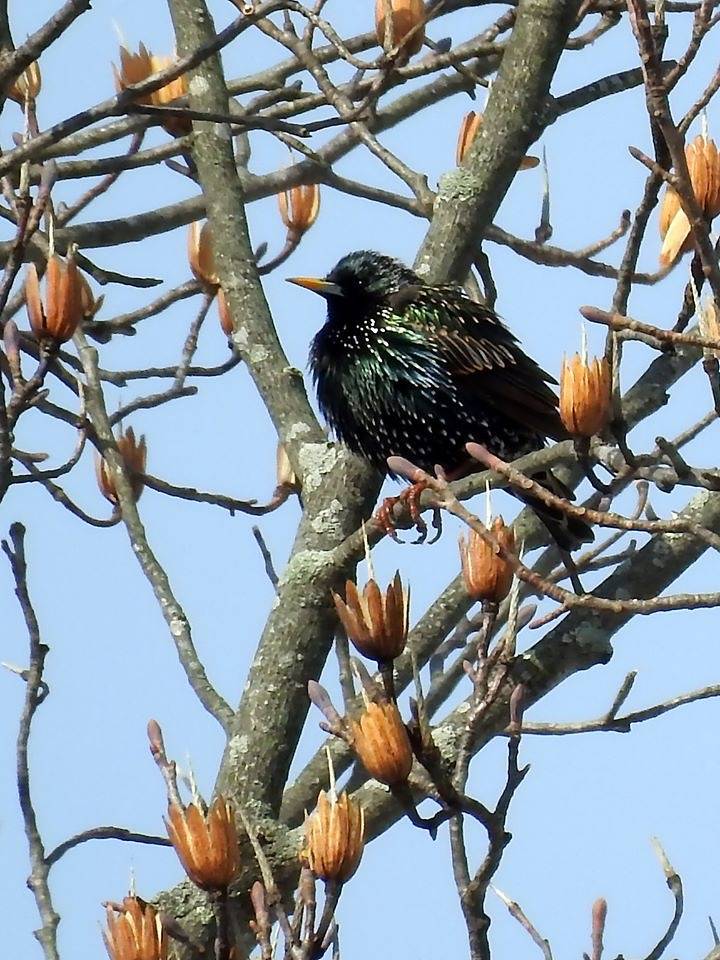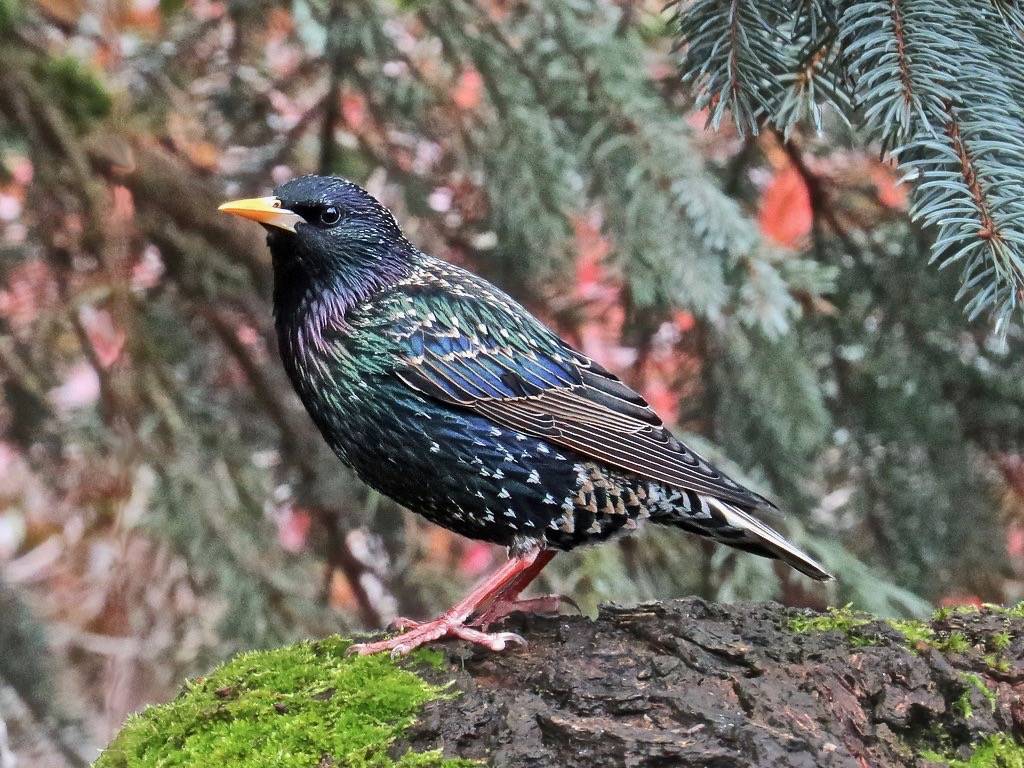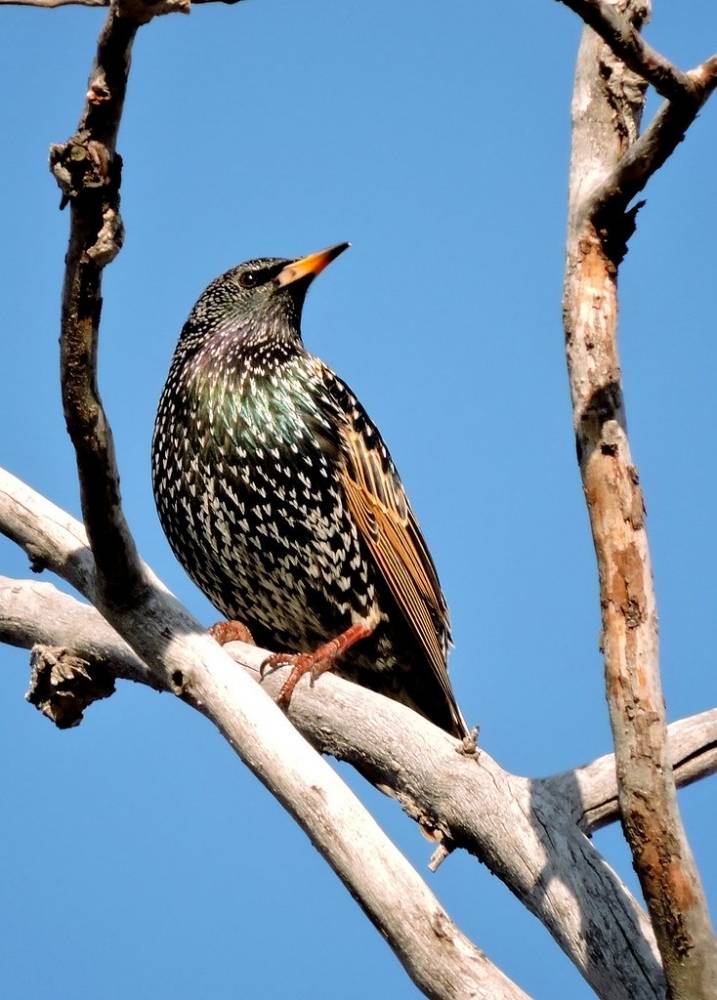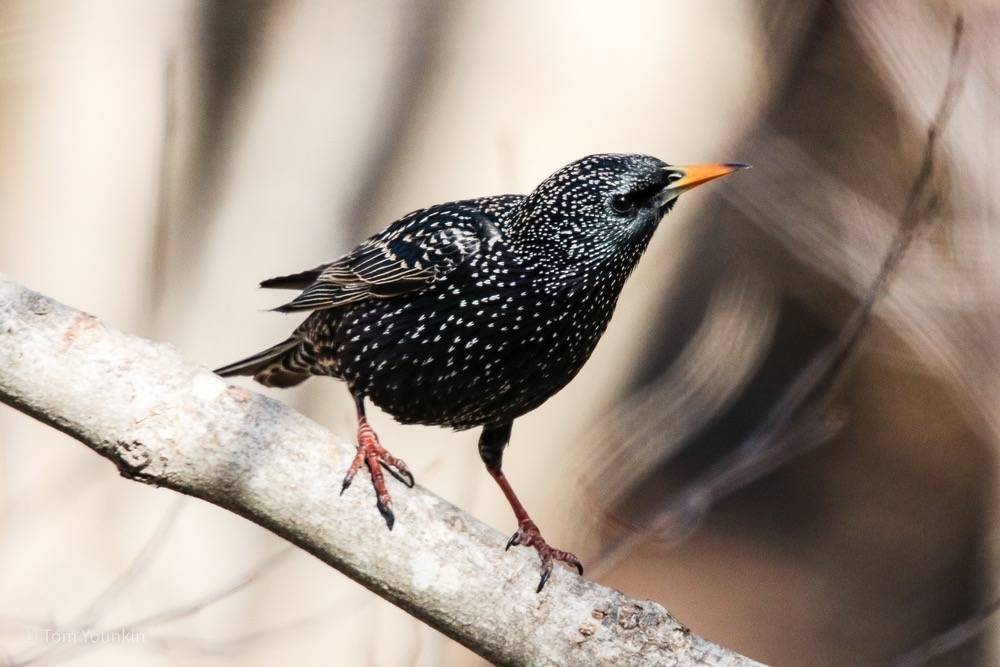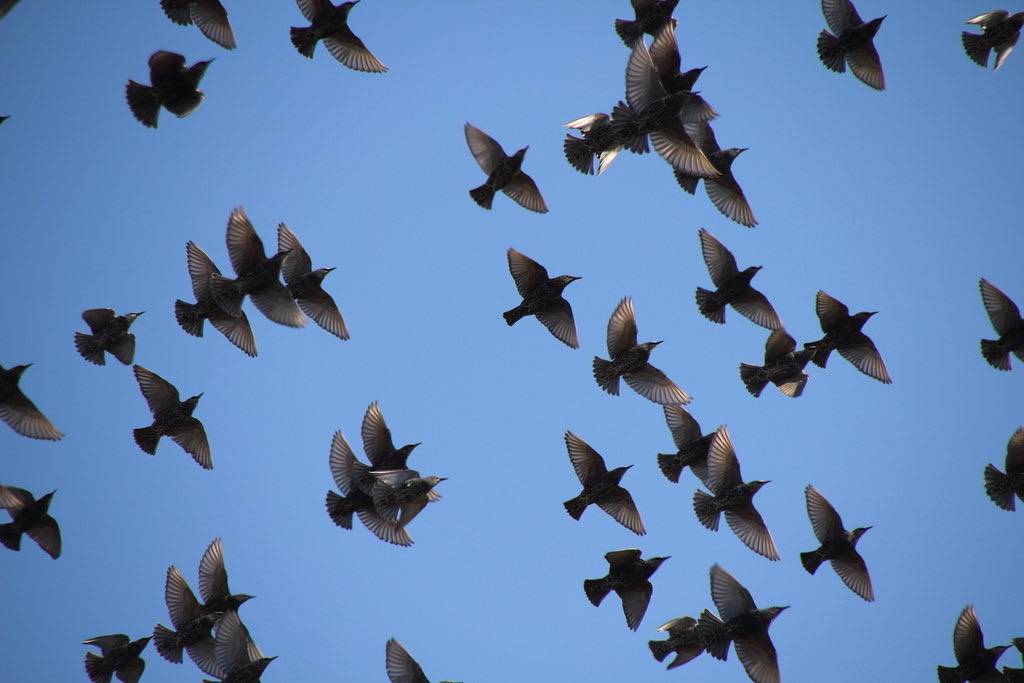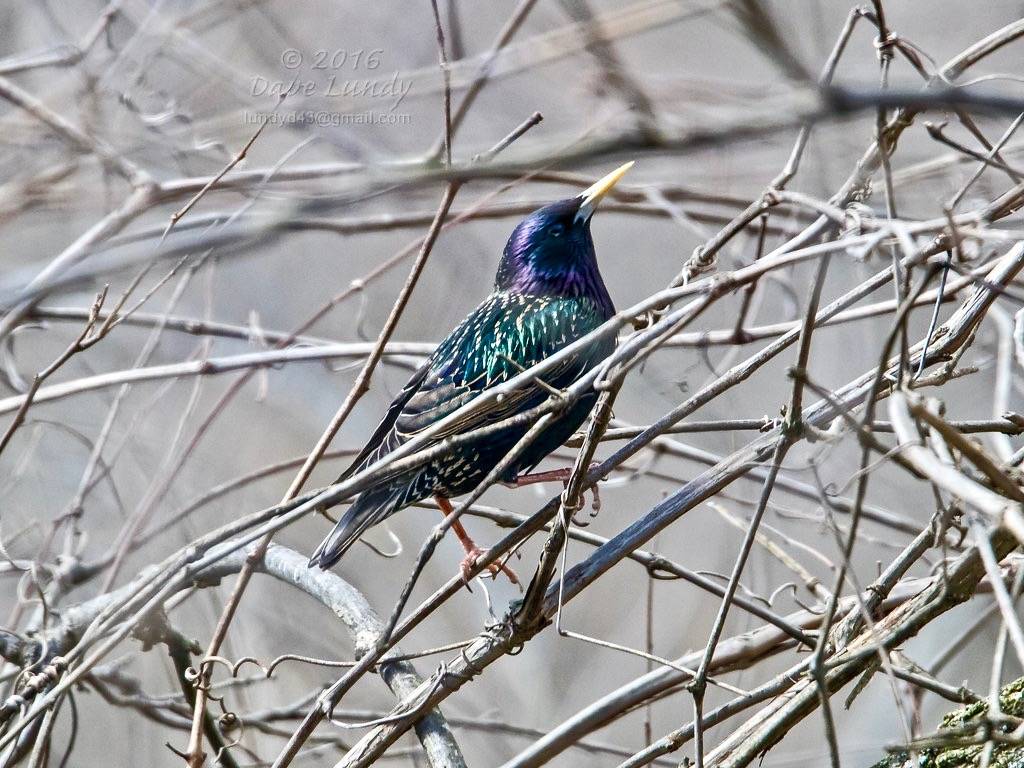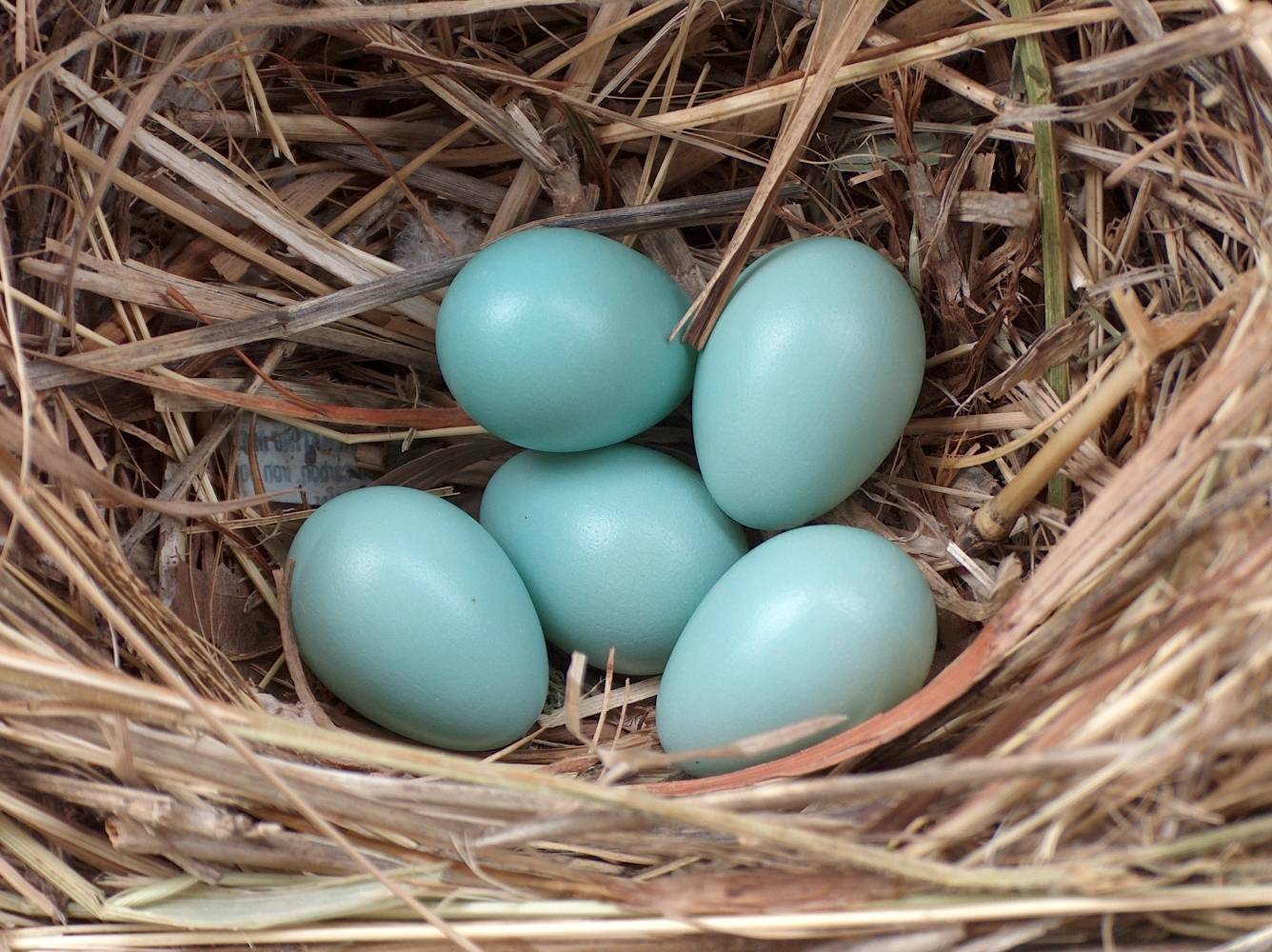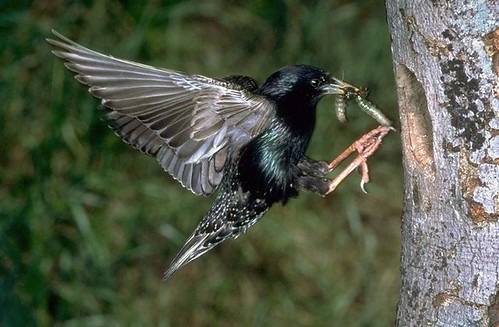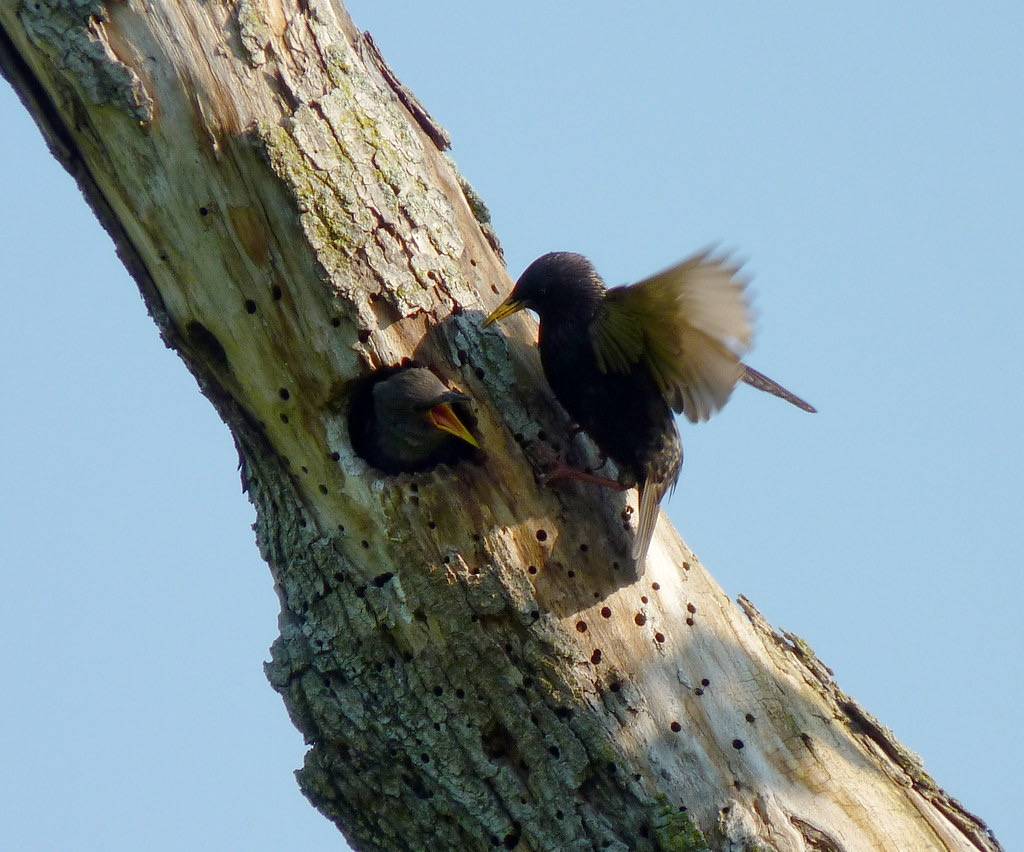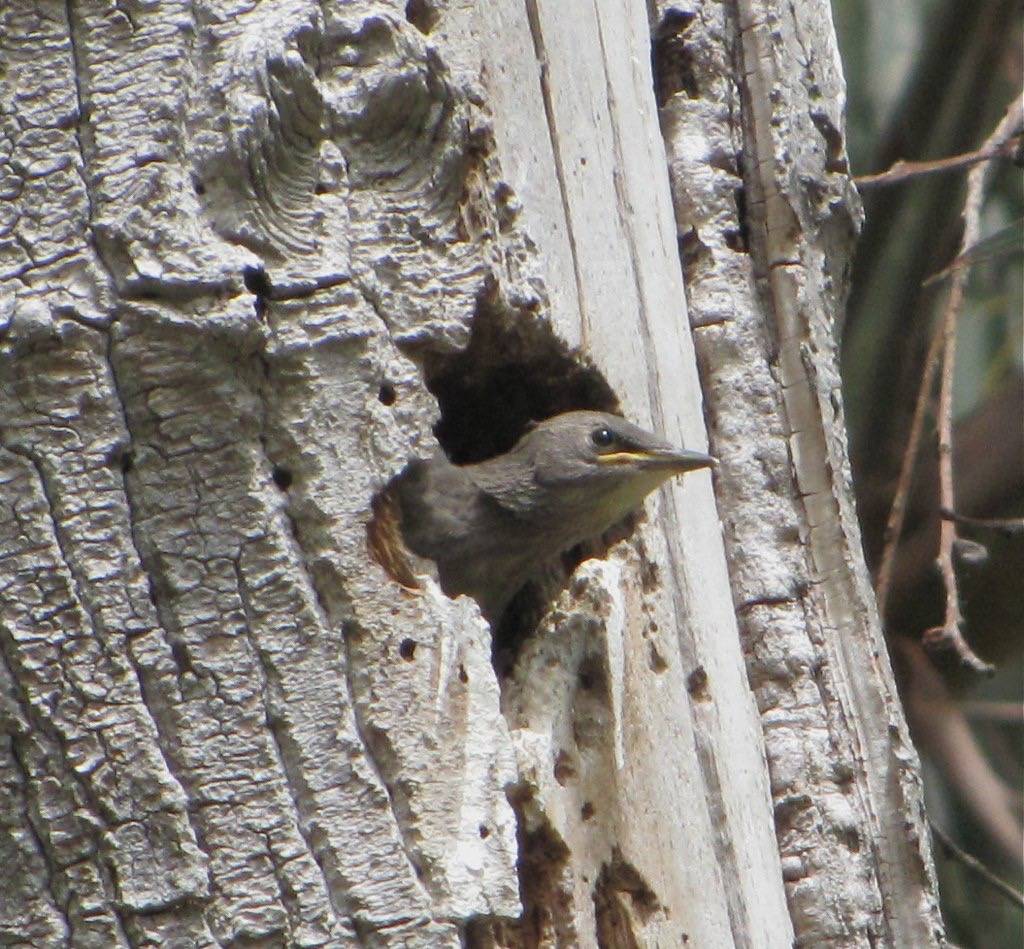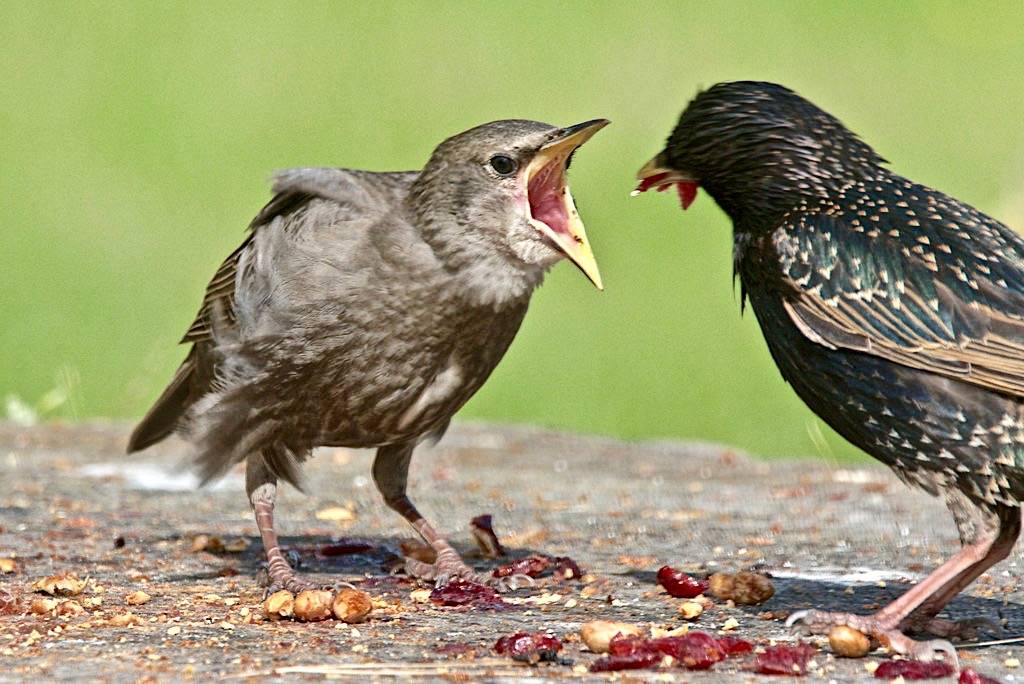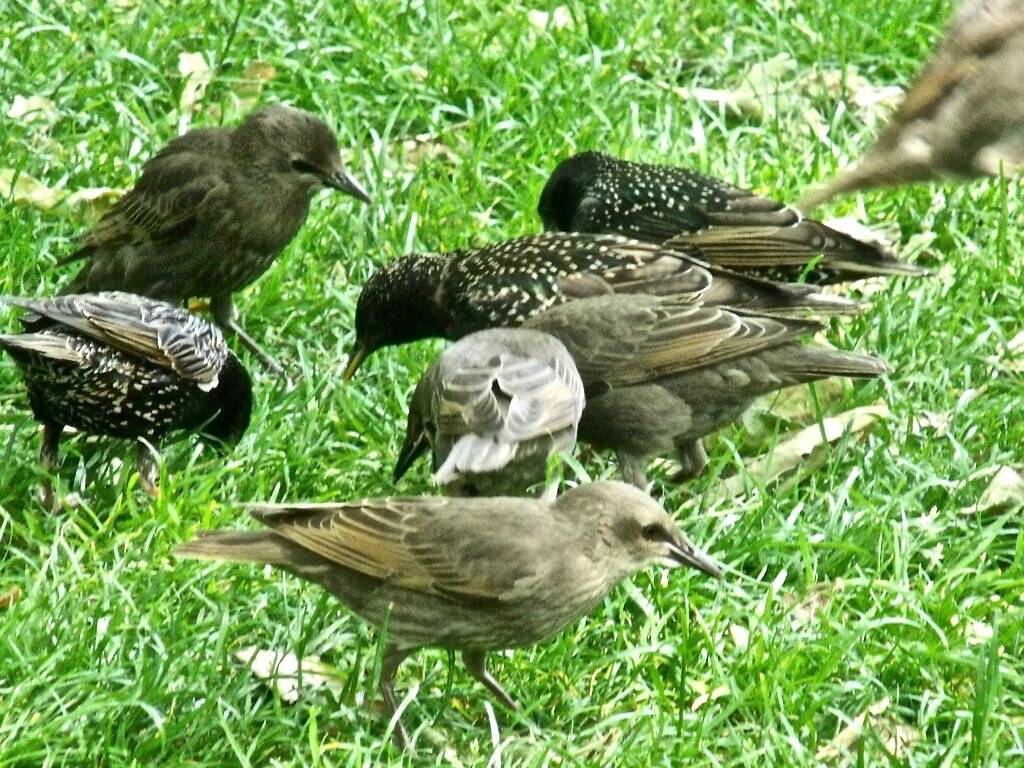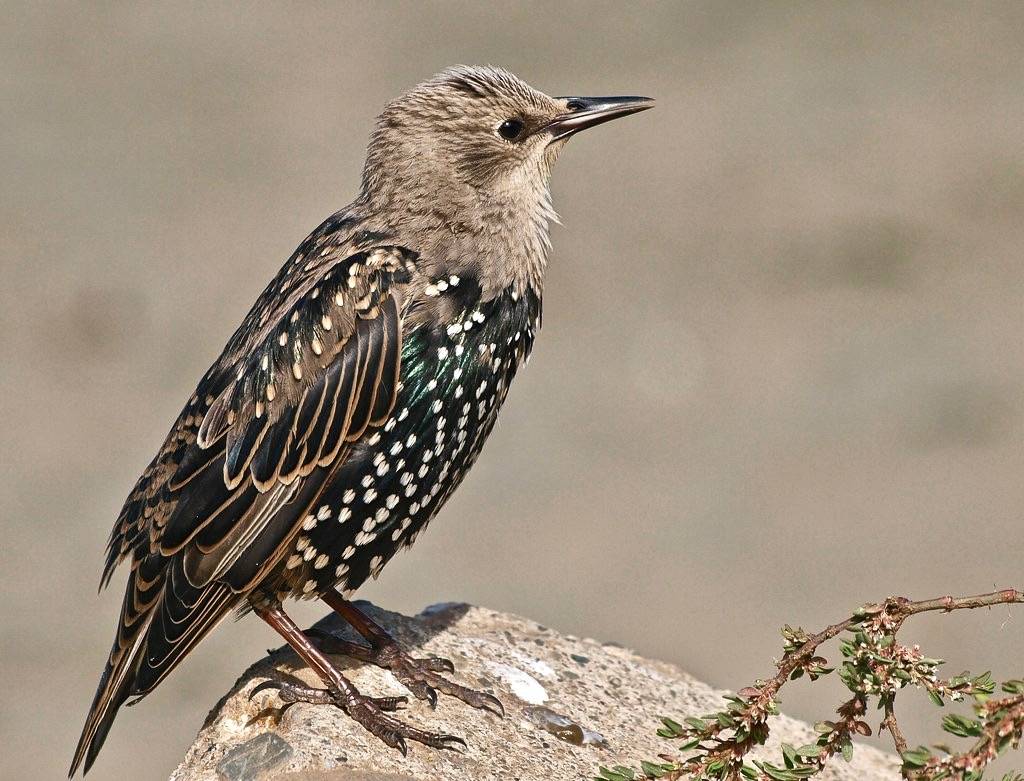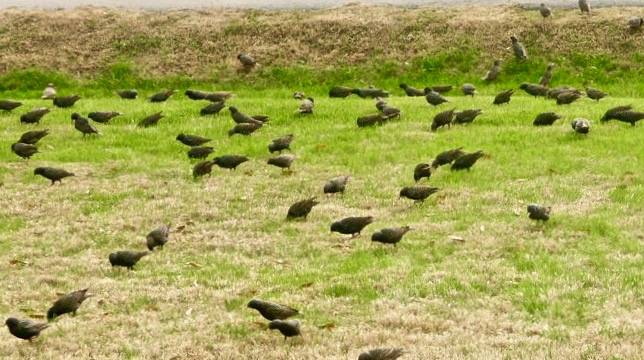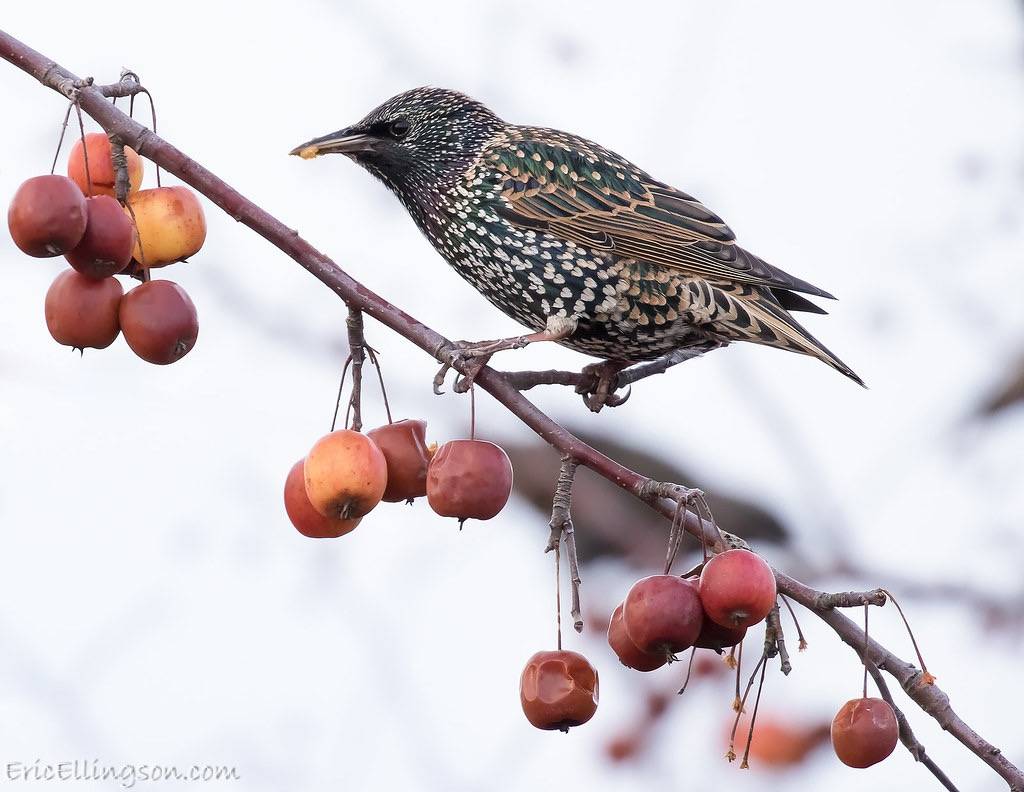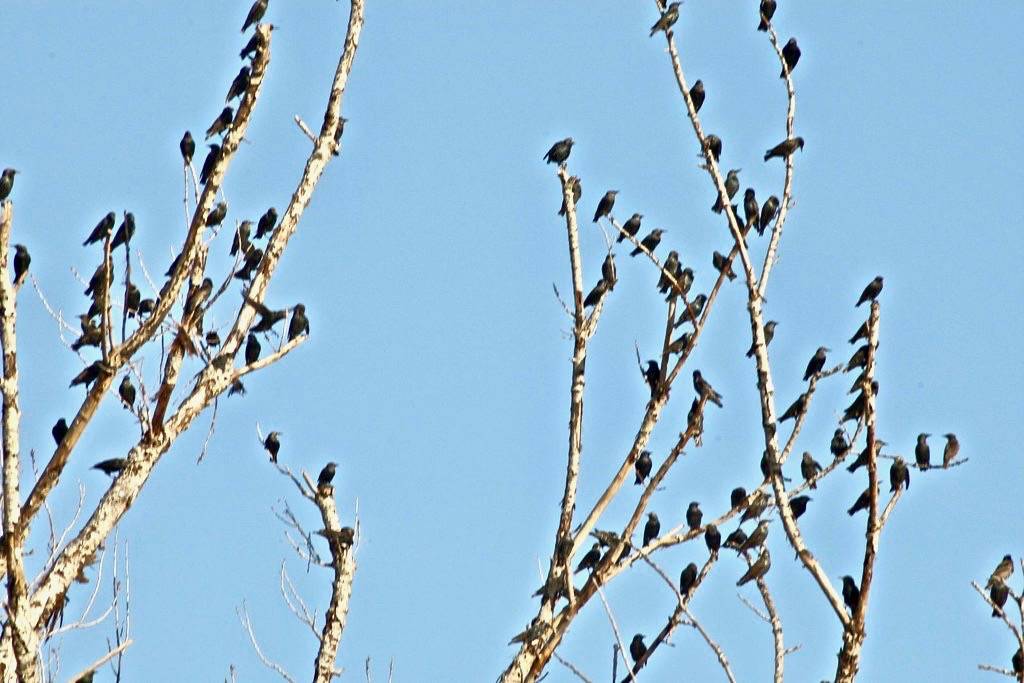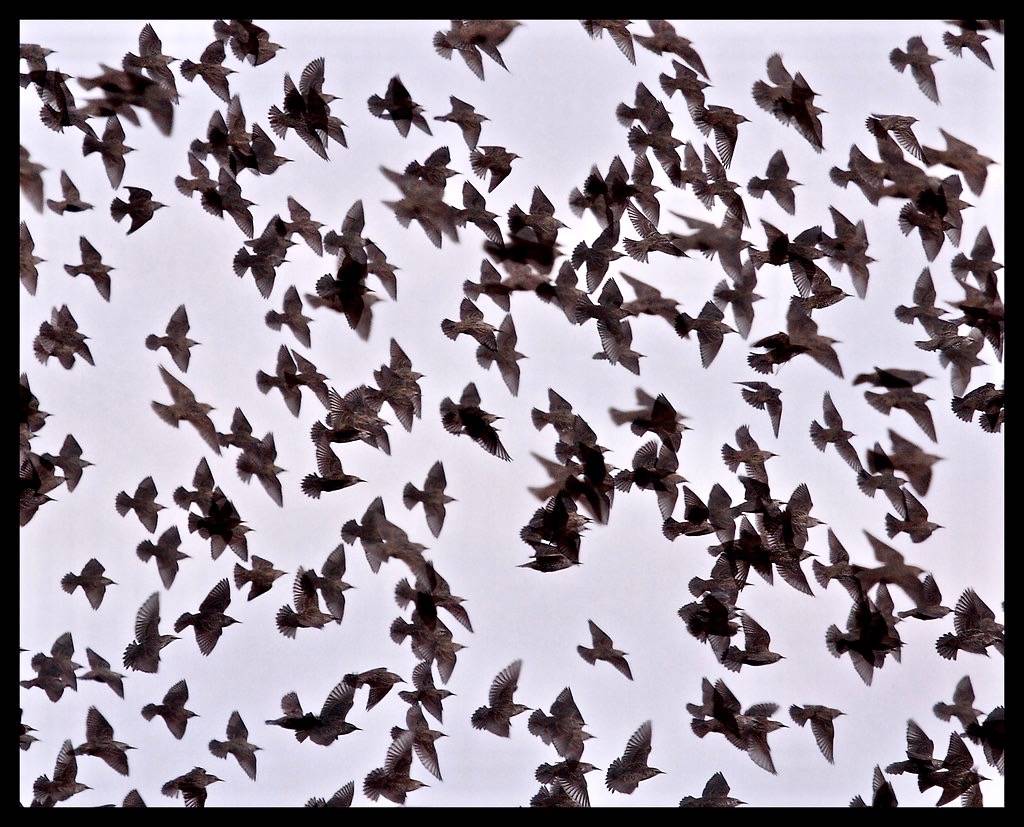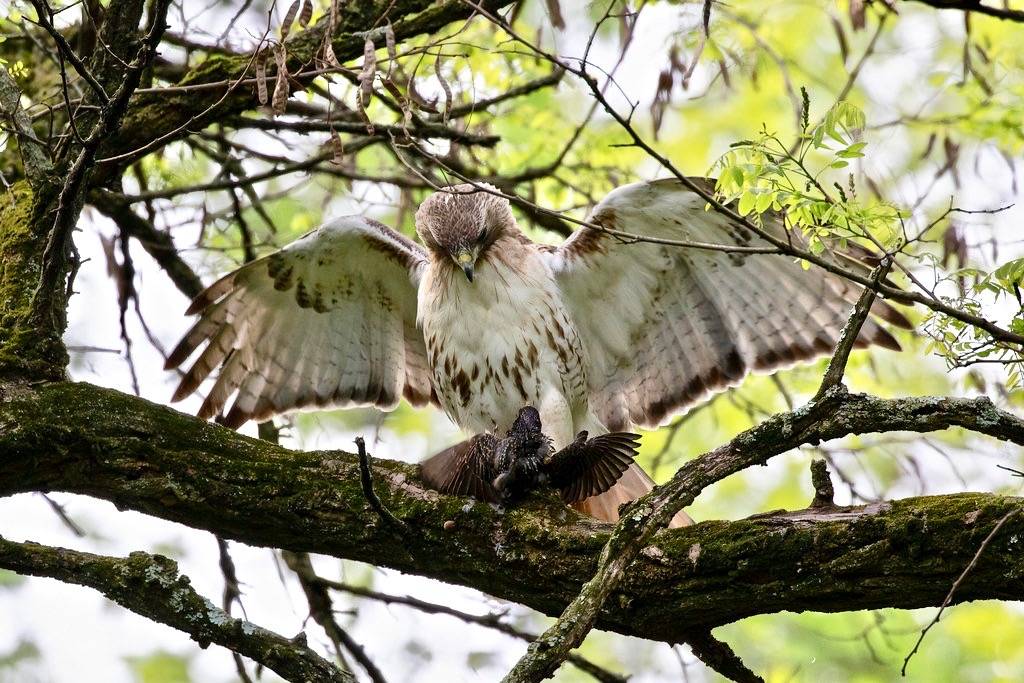European Starling
European Starlings have been recorded at Salter Grove in every month and nearly for every week of the year. They are often seen from the parking lot during the breeding season, flying in small family groups from tree to tree. Flocks of a few dozen individuals can be spotted foraging on the grassy areas on Audubon Field during spring and fall. Starlings are easily identified in flight by their triangular wings.
Starlings can be noisy and mimic many different kinds of birds such as the American Robin, Eastern Wood-Pewee, Killdeer, Northern Flicker, Red-tailed Hawk, and Wood Thrush, among many others. During the warmer months, they probe for insects and other invertebrates in grassy areas. During the colder months, they additionally feed on the fruits of Asian bittersweet, crabapple, rambler rose, plus many others.
The European Starling is native to Asia, Europe and North Africa. Its adaptability to diverse habitats and omnivorous habit have contributed to its success wherever it has been introduced. It is now naturalized in Australia and New Zealand, North America, and southern Africa.
The North American population supposedly resulted from 50 pairs of European Starlings released in New York City's Central Park in 1890. This and earlier introductions on both coasts of the United States were intended to enrich the local fauna with birds mentioned in Shakespeare's work.
Currently, over 200 million European Starlings range from Alaska to Mexico, making them one of the most abundant birds species in North America!
European Starlings are frenemies of farmers. They can be beneficial to agriculture because a large flock of hundreds or thousands can quickly eradicate an infestation of invertebrate pests. On the other hand they can also decimate sprouting or fruiting crops in cultivated fields.
In urban areas the noise and droppings of large roosts cause starlings to be regarded as a great nuisance and health hazard.

